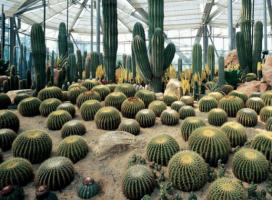High-tech Marks Dunhuang Buddhist Grotto Copies
Three grottoes in Dunhuang, Northwest China's Gansu province, have been replicated at Shanghai Tower, the world's second-tallest building, as part of a 10-month-long exhibition.
Jointly organized by the Gansu Provincial Administration of Cultural Heritage, Dunhuang Research Academy, Gansu Provincial Museum, Shanghai Tower and other institutions, the event opened on April 28, with the aim of providing visitors with an immersive experience by leveraging virtual reality and other advanced technologies.
The full-size replicas - two from the Mogao Caves and one from the nearby Yulin Caves - were installed based on digital archives of their originals.
Frescoes in the original caves have been copied using high-definition scanning and printing technologies, says Mi Qiu, curator of the exhibition.
Dating from the 5th to early 11th centuries, they represent three distinct styles of different periods of the Dunhuang grottoes, China's largest Buddhist art treasure.
Among them, the No 29 cave at Yulin was replicated using high-definition technology for the first time in a public presentation. The murals in the caves present the aesthetics and ethnic flavor of the Western Xia Dynasty (1038-1227), and the continuation of religious ideas at the time.
Mogao's No 220 cave presents frescoes from the early Tang Dynasty (618-907), showcasing many ancient musical instruments and dances. No 285 cave, which dates back to the Western Wei Dynasty (535-556) and features a reverse funnel-shaped roof, is said to have the richest contents of all the grottoes in Dunhuang. It depicts Buddhist and Taoist characters.
Apart from the three replica grottoes, 118 precious cultural relics from seven museums in western China, are also on display. Many exhibits are being shown in Shanghai for the first time, including a bronze statue named Galloping Horse Treading on a Flying Swallow from the Eastern Han Dynasty (25-220).
The statue, unearthed in 1969 from the tomb of a military officer in Zhangye, also in Gansu, is one of the top national treasures in China. As part of the Gansu Provincial Museum's collection, it reflects the legend that a galloping horse can be so fast that it can actually fly higher than a swallow. It became the national official tourism logo in 1983.
The exhibition is also showing three-dimensional holographic images that enable visitors to view immovable sculptures from different locations, including an image of Buddha's nirvana, which features an 18-meter-long reclining Buddha from No 158 cave at Mogao.
Other key exhibits include a Buddhist thangka artwork featuring Milarepa, a Tibetan scholar, 10 original Dunhuang manuscripts, and a collection of other religious and secular documents discovered in the Mogao Caves in the early 20th century.
The exhibition, which runs through February next year, will also present more than 50 seminars and events about the culture, fashion, music and dance, literature and folk arts relating to Dunhuang.
The Dunhuang grottoes are a living record of the ancient Silk Road. More than 700 sandstone caves contain frescos, paintings, sculptures and other relics from the pre-11th century eras.
In 1987, the grottoes, also known as the Caves of the Thousand Buddhas, became a UNESCO World Heritage Site. Facing threats of natural decay and human-induced damage, Dunhuang Research Academy has been working on a digital archiving project since the 1990s. After more than two decades in 2016, the academy launched e-dunhuang.com, a website offering virtual views of 28 of the Mogao Caves.
So far, the academy has completed the digitization of more than 100 caves, according to Zhao Shengliang, the deputy director of Dunhuang Research Academy.
"Dunhuang is a shared treasure of humanity and it is our responsibility to share Dunhuang culture with the world," Zhao says.
"We used to face a dilemma when it came to preservation and sharing. Digitization has solved that - it allows exhibitions of Dunhuang culture to take place at any time, and in any location."
If you go
8:30 am-8 pm, through Feb 28, 2019; entrance fee: 180 yuan ($28.6) per adult, half price for children. Shanghai Tower exhibition hall, Pudong New Area, Shanghai.














